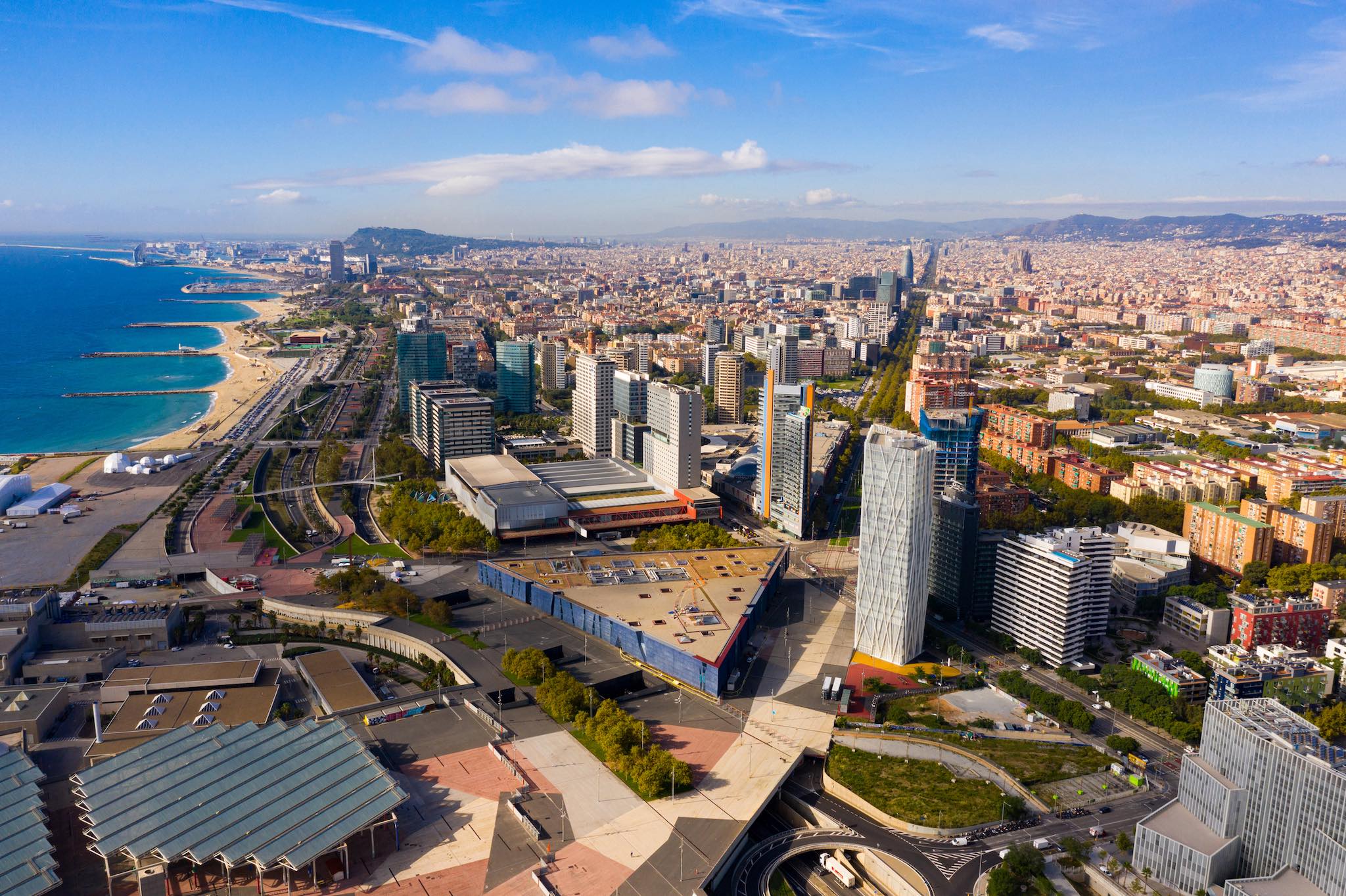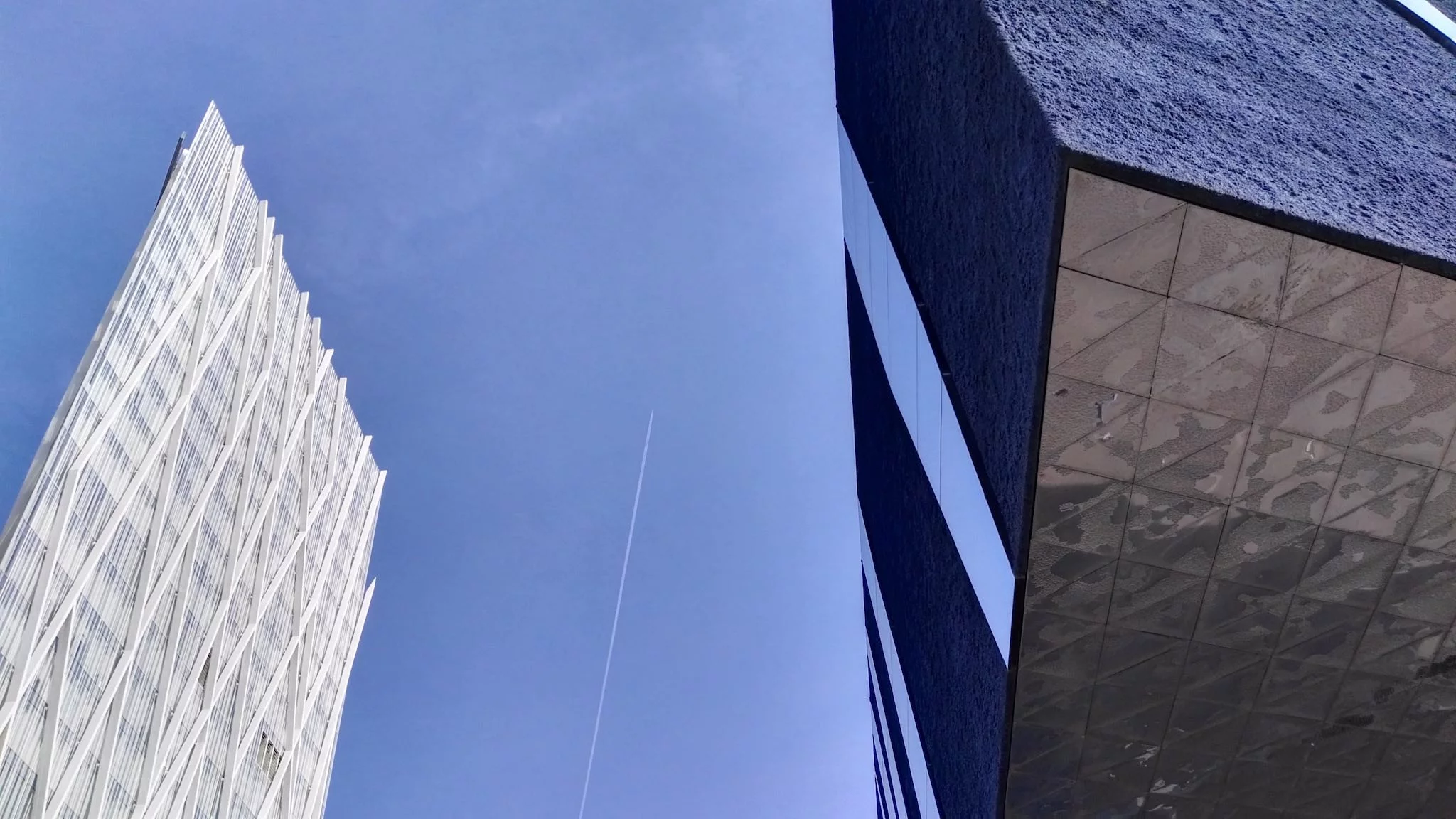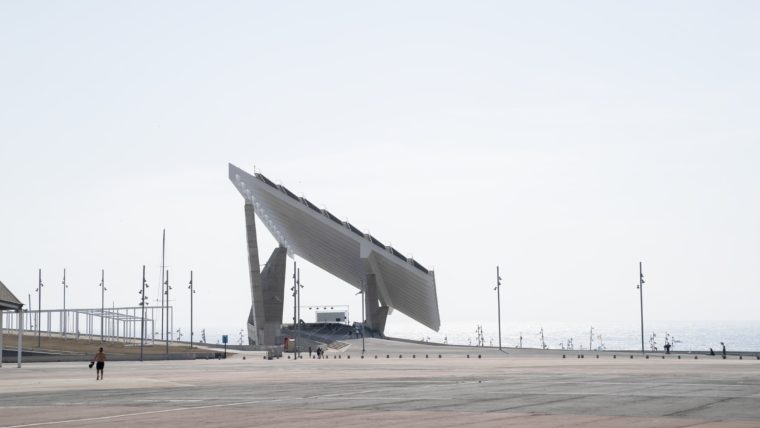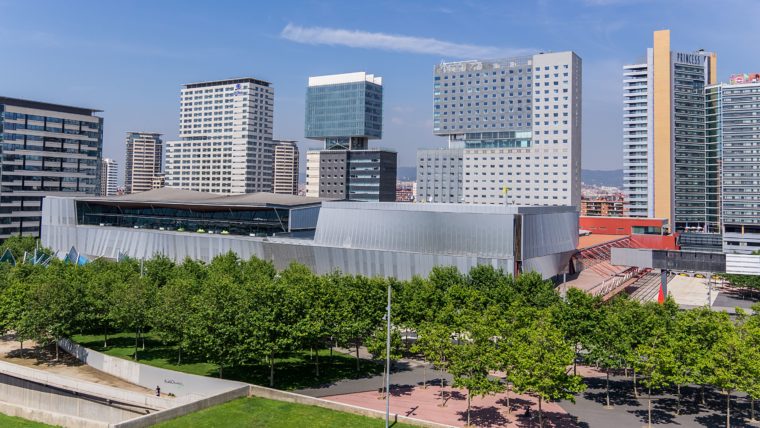The striking architecture of Diagonal Mar

From iconic commercial premises to prime residential real estate, Diagonal Mar is at the forefront of Barcelona’s architectural ambitions.
Imagination in architecture and design has always contributed to Barcelona’s unique character. Diagonal Mar continues that tradition and is now Barcelona’s newest and most striking district.
One of the great things about reinventing a neighbourhood is that it can be designed from first principles, from master planning infrastructure to encouraging a bold new design strategy for buildings. The creation of Diagonal Mar, a former industrial area, offered the opportunity to do something dramatically different. Take a tour with us as we showcase the best of the district’s design, where innovation in architecture sets it apart and makes it the perfect backdrop for modern living.

Antares Barcelona
The dynamic form and jaunty red-and-white colour scheme of Antares Barcelona is at the area’s creative heart. The statement, 28-storey residential development was designed by French ‘starchitect’ Odile Decq, winner of numerous architectural awards, including the Golden Lion of Architecture at the Venice Biennale. Decq is considered a ‘rock star’ architect and is known for her imaginative and avant-garde approach.
It’s no surprise that the building is also award winning; there is nothing comparable visually, aesthetically or in terms of residential design in Barcelona. With its organic, undulating external form, expansive wave-inspired, glass-fronted terraces, innovative interior design and impressive triple-height entrance atrium, Antares Barcelona was voted Best Residential High Rise in Spain by the International Property Awards 2022. Decq’s concept of creating a ‘complete universe’ is made real here, in Antares Barcelona’s visually exciting exterior and stylish but liveable interiors.


Fòrum Building
In 2004, Barcelona hosted the World Cultural Forum and Diagonal Mar’s first landmark was created. Developed as an anchor for the new district, the iconic triangular Fòrum Building is the work of architects Jacques Herzog and Pierre de Meuron. The Swiss company is also behind some of the world’s most notable public buildings, including London’s Tate Modern and the Hamburg concert venue, the Elbphilharmonie.
The building’s design was inspired by the proximity of the sea and by Spanish landscapes and heritage. The indigo-toned, rough exterior splashed with mirrored glass was influenced by the colour and light of the Mediterranean and texture of coral. The dark, cool interiors punctuated by light wells and reflective surfaces, echo both Spain’s natural cave formations and Moorish architecture that plays with shadow and light, and incorporates the reflections of water. The Forum building also has the first wild roof in Barcelona, carrying plants adapted to the local coastal climate.
Edificio Telefonica
Officially called Diagonal Zero Zero, which is a cool enough name, the Edificio Telefonica is also an outstandingly cool building. The 24-storey, 110-metre tall office block is home to Telefonica’s corporate headquarters but was initially intended to be a hotel. Its impactful trapezoid design has won multiple awards and is the work of the Barcelona-based studio of architect Enric Massip-Bosch.
The building design involves a concrete core and exterior aluminium bracing that gives the structure its famous diamond-lattice look. Full glass walls and a 30-metre high atrium flood the interiors with light while also creating a delicate and light-filled appearance across the exterior. Though a business premises, there is public access to some areas of Diagonal Zero Zero, serving the architect’s original vision of having a ‘symbiotic relationship with its surroundings’.


Solar Pergola
You might not consider the famous photovoltaic panel on the Parc del Fòrum’s seafront to be a work of stunning architecture, but it is. Regarded as a ‘superstructure’ it was designed by multi-award-winning team Elías Torres and J.A. Martínez Lapeña. The Barcelona-based firm was also involved in the design of the Fòrum esplanade, for which it won the Special Prize at the prestigious International Architecture Biennial in 2004.
A symbol of the Catalan capital’s commitment to sustainable energy, the panel is 52 metres tall and has the surface area of a standard football pitch. In addition to providing enough energy to supply an estimated 1,000 individuals, its vast structure acts as a shady place for visitors to escape the sun, perhaps while they’re enjoying a beachfront power walk.

Parc Diagonal Mar
Another project that combines sustainability with industrial-influenced architecture is Parc Diagonal Mar, an open oasis of lakes, pathways and play areas. The concept is the work of Enric Miralles and Benedetta Tagliabue who turned the 14-hectare site into seven sections defined by natural planting, structured walkways, huge ceramic-encrusted planters inspired by Gaudi, and tubular sculptures combining form and function.
The different areas are connected by water, either on display as lakes and fountains or transported via the tubular sections. What was a former industrial wasteland is now an elegant, open public space that connects the city to the seafront.
Barcelona International Convention Centre
More than just a conference venue, the world-class waterfront Barcelona International Convention Centre also has the stamp of a well-known design team. Barcelona architect José Luís Mateo, well-known for his clean, geometric lines and sleek facades, was commissioned to create Europe’s biggest convention centre for the 2004 Forum of Culture. He has commented that the centre is not “properly a building but a set of objects with different functions.”
Designed to maximise the natural light of the Barcelona seafront, the impressive, shimmering structure is built from concrete and large-span steel. Mateo has described it as being “structure and abstraction; the exterior block talks to the sea and the sky”. It has served the city well and been the venue for many world-class events from conferences to concerts. If you didn’t know, it also connects via an underground passage to the Fòrum building across the plaza.
